As we prepare to ring in the new year, we’re taking a brief moment to spotlight our 2023 research accomplishments. These activities illustrate the institute’s continued commitment to research and training to understand human development, improve reproductive health, promote women’s health, enhance the lives of children and adolescents, and optimize abilities for all.
Promoting Healthy Pregnancy, Labor, and Delivery

NICHD supports research to promote healthy pregnancies, optimizing the lifelong health of pregnant individuals, children, and families. In an international clinical trial supported by NICHD’s Global Network, researchers found that a single oral dose of the inexpensive antibiotic azithromycin reduced the risk of postpartum sepsis and death by one-third among women who deliver vaginally. The institute also helped establish Maternal Health Research Centers of Excellence to develop and evaluate innovative approaches to reduce pregnancy-related complications and deaths and promote maternal health equity in the United States. Furthermore, the Stillbirth Working Group of Council, which was formed by NICHD to examine stillbirth in the United States, submitted its final report, Working to Address the Tragedy of Stillbirth, to the Department of Health and Human Services, and a new working group is tackling how to implement the recommendations in the report to decrease stillbirths.
Improving Outcomes for Newborns with Opioid Withdrawal

Medical care for newborns who were exposed to opioids during pregnancy varies widely across hospitals in the country. In a national, randomized clinical trial, researchers found the “Eat, Sleep, Console” (ESC) care approach to be more effective than using the Finnegan Neonatal Abstinence Scoring Tool (FNAST), which has been used for decades to assess and manage opioid-exposed newborns. ESC assessments are centered on an infant’s ability to eat, sleep and be consoled, and the approach keeps mother and baby together, enabling families to play a larger role in the care of their infants. Importantly, the study showed that infants cared for with the ESC approach were medically ready for discharge one week earlier than infants assessed with FNAST. The study is part of the Advancing Clinical Trials in Neonatal Opioid Withdrawal Collaborative, which is co-led by NICHD and the NIH Environmental influences on Child Health Outcomes Program and funded by the NIH Helping to End Addiction Long-term® Initiative.
Advancing Treatments for Gynecological Conditions

Endometriosis, in which tissue similar to the lining of the uterus grows outside of the uterus, is one of the most common gynecological diseases, affecting one in 10 women 
Creating New Technologies
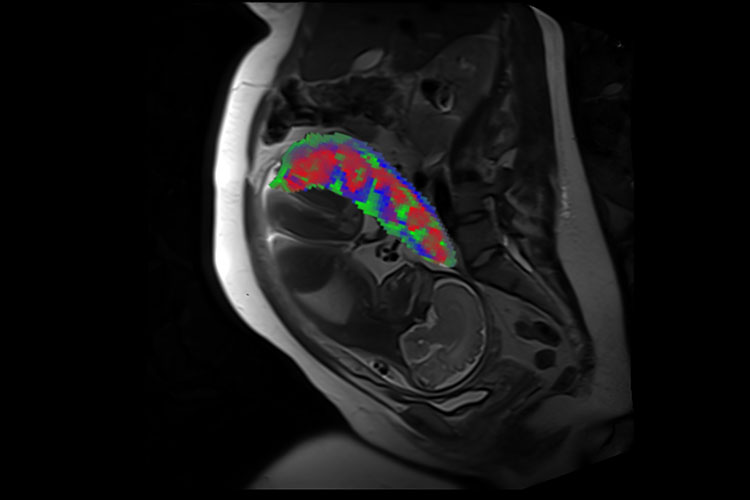
MRI scan showing the fetus and placental compartments.
Credit: Wang Lab, Washington University in St. Louis
NICHD’s Human Placenta Project (HPP) is an effort to revolutionize our understanding of the human placenta and to enable the development of safe, noninvasive, real-time assessment of human placenta development and function across pregnancy. HPP researchers developed a new method to process MRI scans to reveal the distinct compartments of the placenta, take measurements of oxygen levels in each region, and determine if there are malformations in blood vessels (i.e., placental lesions). Obtaining this level of detail is currently not possible using standard MRI analysis methods. The new method can serve as an objective, quantitative way to assess placental health during pregnancy. With additional validation and refinement of this technique, the method may be used by health care providers as a tool in the care of pregnant patients, especially those at risk for pregnancy complications.
Developing New Contraceptives
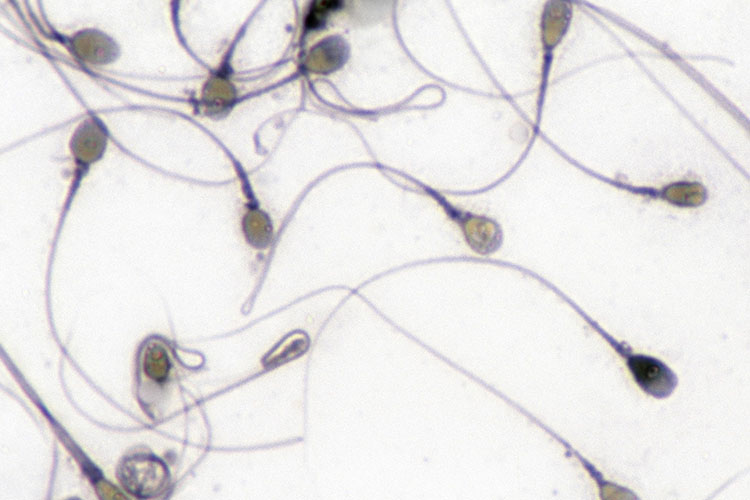
NICHD supports research on new contraceptives for both men and women. In early 2023, researchers funded by NICHD identified a potential non-hormonal contraceptive that men could take shortly before sexual activity and have their fertility restored the next day. In the study, male mice were given a compound called TDI-11861 that temporarily disabled soluble adenylyl cyclase, the enzyme essential for activating a sperm cell’s ability to mature and swim. The study provides proof of concept that soluble adenylyl cyclase inhibitors have the potential to provide a safe, on-demand, non-hormonal, and reversible oral contraceptive for men.
Reducing Disparities for Children with Intellectual and Developmental Disabilities
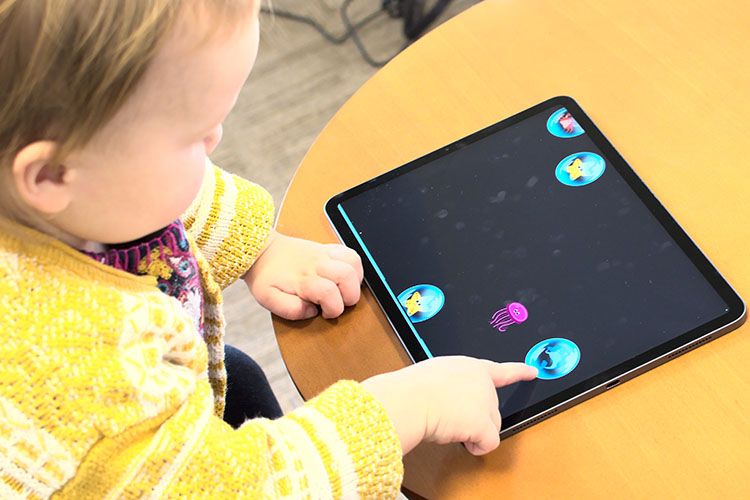
A toddler using the tablet-based ASD screening app.
Credit: Duke University
Early detection of autism spectrum disorder (ASD) is critical for implementing interventions that can have major long-term positive effects on symptoms and later skills. NICHD-funded researchers recently reported the development of a tablet-based app that may help reduce disparities in access to early ASD diagnosis. The accuracy of the standard parent questionnaire used for ASD screening tends to be lower among girls and children of color, but the app’s ability to reliably detect children diagnosed with ASD was consistent across toddlers of different sex, race, and ethnicity. By accurately identifying toddlers who warrant further investigation for ASD, the app may help health care providers ensure that children and families receive the support they need.
Enhancing Safety in Contact Sports

Repeated traumatic brain injuries may result in chronic traumatic encephalopathy (CTE), a serious condition that can lead to dementia and eventually death. To help prevent CTE in people who play contact sports, scientists are investigating the types of head impacts that confer the most risk. An NICHD-funded study of youth, high school, and college football players found that the force of blows to the head better predicted CTE than the number of concussions. The findings suggest that strategies to lower the number of head impacts and the force of the hits could decrease the odds that athletes develop CTE.
Improving Care for Pediatric Injury and Illness
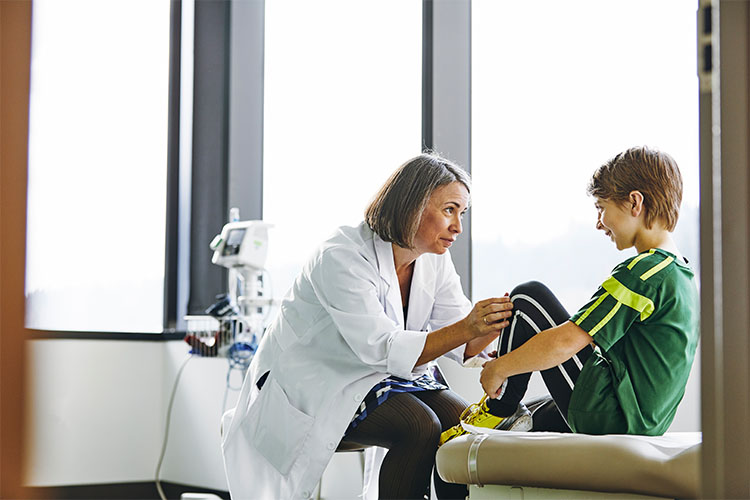
Developing medical interventions that meet the unique needs of children is essential to improve health outcomes for the youngest and most vulnerable populations. This year, NIH and partners announced the launch of the design phase of a public-private partnership to address the lack of medical devices designed and approved for children in the United States. Implementation of effective care strategies for pediatric injury and illness also is critical. An NICHD-funded study of nearly 1,000 emergency departments in 11 states found that those with the highest levels of coordination of health care, personnel, procedures, and medical equipment needed to care for ill and injured children have far higher rates of survival than hospitals with low readiness. Researchers found that more than 1,400 children’s deaths may have been prevented if hospital emergency departments had adopted national pediatric care readiness standards.
Advancing Outcomes for Children with a COVID-19 Complication
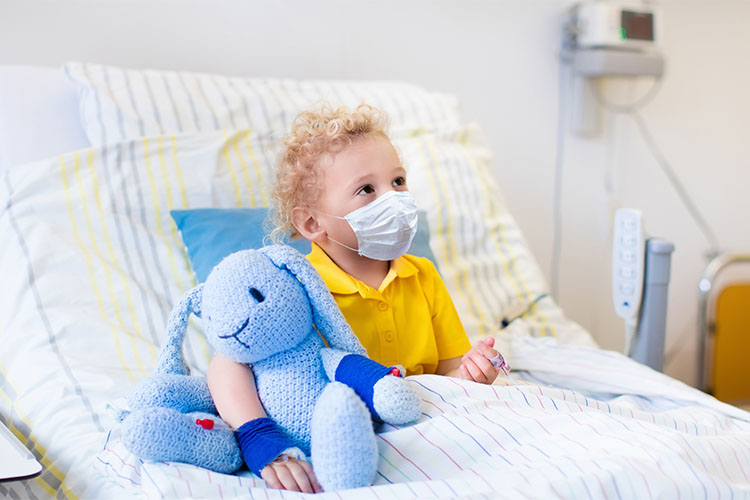
Children with multisystem inflammatory syndrome (MIS-C)—a rare condition linked with the COVID-19 virus—have distinct biochemical indicators of cell injury and cell death, an NICHD-funded study found. These biomarkers allowed researchers to distinguish between study participants with COVID-19 and those with MIS-C, which causes inflammation in different body parts, including the heart, lungs, kidneys, brain, skin, eyes, and gastrointestinal tract. The findings could lead to new means of diagnosis and treatment for MIS-C.
Boosting Basic Science Research
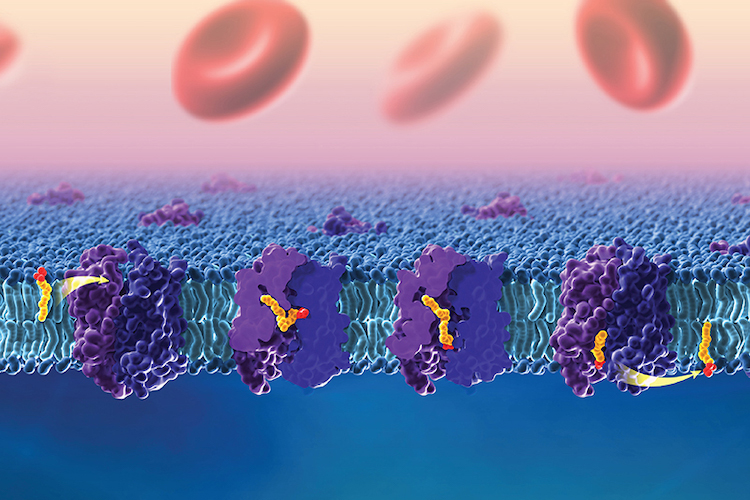
Docosahexaenoic acid crosses the blood-brain barrier through the lipid transporter Mfsd2a.
Credit: Ethan Tyler, NIH Medical Arts
Basic science enhances understanding of living systems and life processes. This knowledge can later be translated into applications that benefit human health. For example, NICHD researchers and their colleagues developed a zebrafish model that provides new insight into how the brain acquires essential omega-3 fatty acids, including docosahexaenoic acid (DHA) and linolenic acid (ALA). The findings have the potential to improve understanding of lipid transport across the blood-brain barrier and of disruptions in this process that can lead to birth defects or neurological conditions. The model may also enable researchers to design drug molecules that are capable of directly reaching the brain.
Related Links
Promoting Healthy Pregnancy, Labor, and Delivery
- Labor and Delivery
- Maternal Morbidity and Mortality
- Pregnancy
- Stillbirth
- Director’s Corner: Addressing the Tragedy of Stillbirth
- Director’s Corner: Addressing Inequities to IMPROVE Maternal Health for All
- Maternal and Pediatric Infectious Disease Branch (MPIDB)
- Population Dynamics Branch (PDB)
- Pregnancy and Perinatology Branch (PPB)
Improving Outcomes for Newborns with Opioid Withdrawal
- Infant Care and Infant Health
- Director’s Corner: Optimizing Care for Newborns
- Pregnancy and Perinatology Branch (PPB)
Advancing Treatments for Gynecological Conditions
Creating New Technologies
- Human Placenta Project Showcase
- Maternal Morbidity and Mortality
- Miscarriage
- Pre-Pregnancy Care and Prenatal Care
- Pregnancy
- Labor and Delivery
- Stillbirth
- Pregnancy and Perinatology Branch (PPB)
Developing New Contraceptives
- Contraception and Birth Control
- Contraception Research Branch (CRB)
- Contraceptive Development Program (CDP)
Reducing Disparities for Children with Intellectual and Developmental Disabilities
- Intellectual and Developmental Disabilities (IDDs)
- Intellectual and Developmental Disabilities Branch (IDDB)
Enhancing Safety in Contact Sports
Improving Care for Pediatric Injury and Illness
- Pediatric Injury
- Director's Corner: Preventing Pediatric Injuries
- National Center for Medical Rehabilitation Research (NCMRR)
- Obstetric and Pediatric Pharmacology and Therapeutics Branch (OPPTB)
- Pediatric Trauma and Critical Illness Branch (PTCIB)
- NIH Pediatric Research Consortium (N-PeRC)
Advancing Outcomes for Children with a COVID-19 Complication
- NICHD Research: COVID-19 in Children
- News: NIH-funded project seeks to identify children at risk for MIS-C
- Maternal and Pediatric Infectious Disease Branch (MPIDB)
 BACK TO TOP
BACK TO TOP